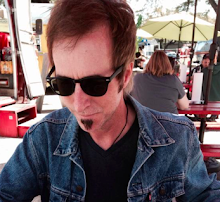The
most important part of your social media presence is not what your hospital or
practice has to say, but what your patients have to say – especially to one
another. Peer-to-peer interaction is the heart of social media. Likewise, it’s
an important variable in the health care.
According
to a study conducted by the Pew Research Center, more that 7 out of 10 Internet
users living with a chronic illness have gone online to find other people with
similar health issues. As a trusted source for health care information, you can
use social media to reinforce that role by creating a channel for their
connectivity. Your effort provides value and supports patients during their
journey to wellness.
Unfortunately,
too much of what happens in a health care brand’s social media strategy is
marketing and public relations centric. “We’re sponsoring a 5K.” “We have the
best doctors.” And so on.
What if instead of posting content that merely announces
information, you published open-ended content that creates engagement and starts
conversation?
Treating your social media as a sort of water cooler for
conversations allows you to move in and out of it as teacher and learner. It
enables conversations wherein your patients and their friends as fans and
followers learn from one another.
Did I
just make this up? Nope. “These (social media) tools help us reach so many more people; we can
bring shared interactions into our practice and that is powerful. This isn’t in
addition to your job. This is part of your job. This is a conversation,
and that is what we are trained to do. We can engage learners, patients and
peers,” Farris Timimi, M.D., medical director for the Mayo Clinic Center.
And, social
media allows patients to have the conversation that you’re often reluctant to have
– the one that says, “it’s going to be alright”.
It
starts with “I’m newly diagnosed” or “My loved one is going through a difficult
treatment” and all they’re really looking for is somebody who’s been there and
can tell them what to expect.
Patients
and their friends are hoping to find answers, information, advice and perhaps empathy.
They are hoping to find someone who truly “gets it” or who shares their
experience and has made it through. They’re even hoping for an opportunity to
share hope with another.
You’re
not a cynic. You’ve just been conditioned to focus on the serious business of
medicine. But that sometimes gets in the way of the hope and promise of
medicine - which is what most patients see as medicine’s role.
This
notion of hope and connectivity was recently affirmed by a little social
experiment. My teammates built a wall, placed it on a street corner in Memphis for
one day and invited people to leave a thought related to health. We called it
the “I wish you well” wall. There were over 1000 post-it-notes left on the wall
and dozens taken by those who happened by.
We
learned that patients, family members, friends and passers-by generally want
the best for others. They’re notes were hopeful, often funny, sometimes
poignant and full of promise. The notes were personal yet widely applicable.
We
know that patients want to connect with you, but they also want to connect with
one another. You don’t have time to build a wall for post-it-notes. So, use
your social media presence to make it happen.
Post
a subject header like “What’s the most meaningful thing a friend has done for
you during your treatment?”
Your
efforts will lead to connections, enable shared experiences and fuel a little
hope for better health outcomes.
Come
on. Try it. I wish you well.

No comments:
Post a Comment